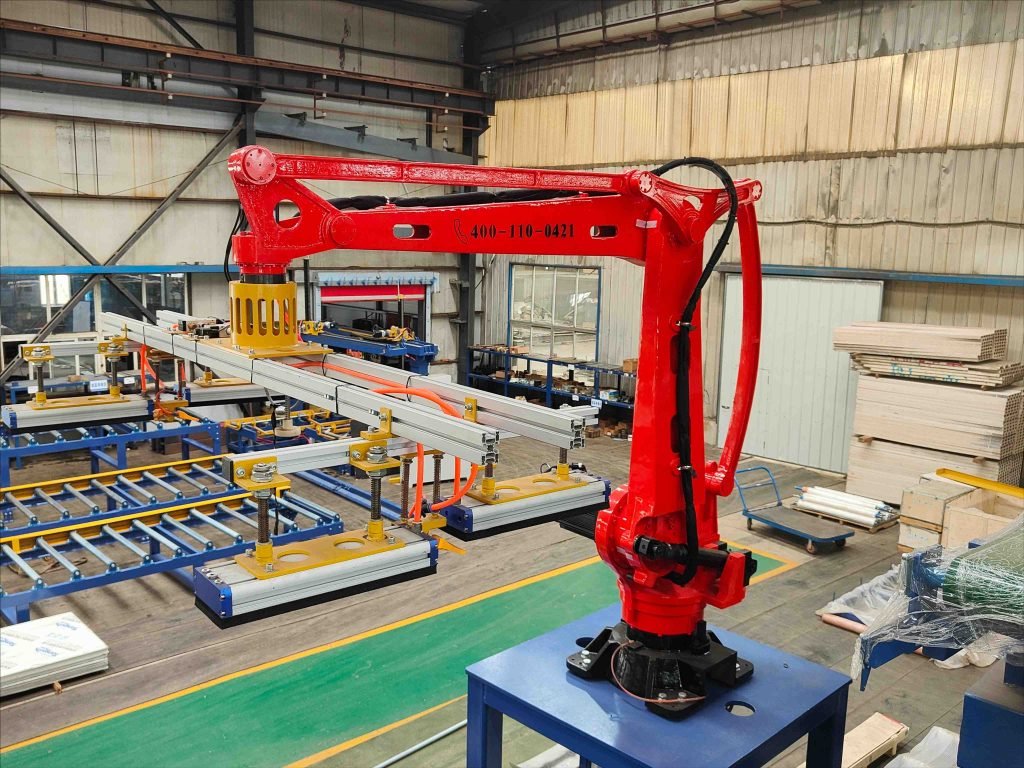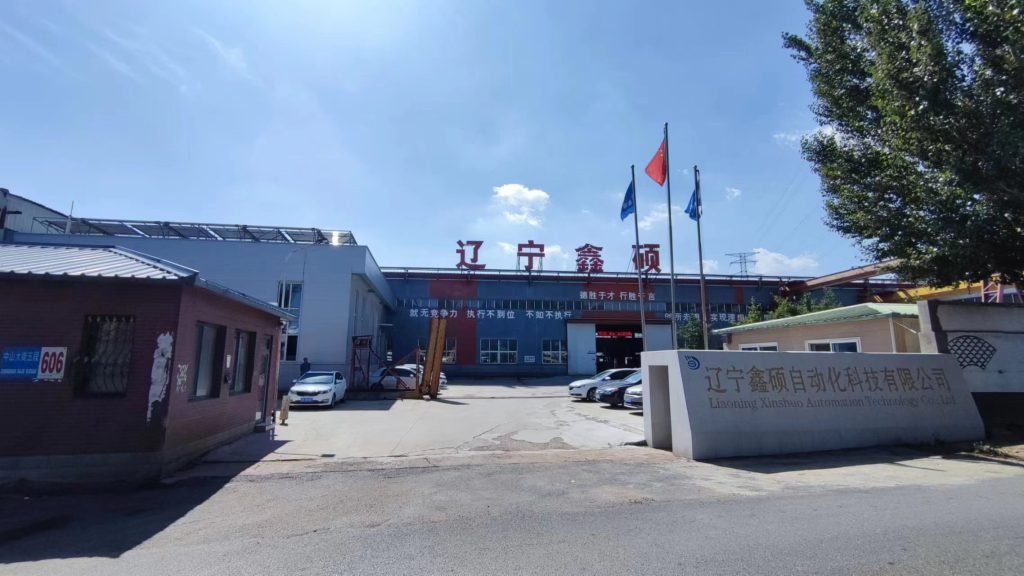Sandwich panels, made from two outer layers of metal or other materials with a lightweight core, are widely used in the construction, automotive, and refrigeration industries due to their excellent strength-to-weight ratio, superior thermal insulation properties, and fire resistance. As industries evolve, so too does the technology used to manufacture these panels. The production line technology for sandwich panels has seen rapid advancements, improving efficiency, cost-effectiveness, and product quality. In this article, we will explore the key innovations in sandwich panel production line technology that are shaping the future of the industry.
1. Automation in Sandwich Panel Production
The integration of automation into sandwich panel production lines has revolutionized the industry by streamlining the entire manufacturing process. Automation increases production speed, reduces errors, and ensures consistency in the quality of the final product.
Robotic Systems for Precision Cutting and Shaping
One of the main advancements in automation is the use of robotic systems for precision cutting and shaping of the raw materials. Robots are now capable of cutting the outer facings (usually made of steel or aluminum) and core materials (such as foam, polystyrene, or mineral wool) with high precision, reducing material waste and ensuring the panels meet exact specifications. These automated systems are faster than traditional methods and can operate continuously, significantly increasing the production rate.
Automated Adhesive Application
Adhesive bonding is a crucial step in sandwich panel production, and automated adhesive application systems have dramatically improved this process. By using automated systems, manufacturers can ensure a consistent amount of adhesive is applied to the core material, eliminating variability and enhancing the overall bond strength. This consistency leads to better product quality and durability, while also minimizing the use of excessive adhesives.
Quality Control Automation
Quality control in sandwich panel production has also benefited from automation. Modern production lines are equipped with advanced sensors and AI-driven systems that monitor and detect defects in real-time. These systems can identify surface imperfections, dimensional inaccuracies, or inconsistencies in the adhesive layer, ensuring only high-quality panels proceed to the next stage of production.
2. Innovations in Core Materials
The core material is the backbone of a sandwich panel, providing essential properties like insulation, strength, and fire resistance. Advances in core material technology have made it possible to create more efficient, sustainable, and high-performance sandwich panels.
Polyurethane (PU) and Polyisocyanurate (PIR) Foams
Polyurethane and polyisocyanurate foams have long been popular core materials due to their excellent thermal insulation properties. Recent developments in foam technology have led to the production of higher-density foams that offer improved thermal efficiency and durability. These foams are also more environmentally friendly, with reduced CFC (chlorofluorocarbon) content, addressing growing concerns about their environmental impact.

Mineral Wool (Rock Wool) Enhancements
Mineral wool (rock wool) is commonly used for its fire-resistant properties, and recent innovations in its manufacturing process have made it lighter and more efficient. Modern mineral wool is not only fire-resistant but also offers better thermal insulation, making it suitable for applications requiring both heat resistance and energy efficiency, such as in the construction of fire-rated walls and ceilings.
Eco-Friendly and Sustainable Core Materials
As sustainability becomes increasingly important, there has been a push toward using environmentally friendly materials in sandwich panel production. New core materials, such as recycled polystyrene and natural fibers (like hemp and flax), offer similar insulation and structural benefits as traditional materials but with a smaller environmental footprint. These sustainable options are gaining popularity in industries that prioritize green building standards.
3. Advanced Bonding Techniques
The bonding process plays a critical role in ensuring the structural integrity and performance of sandwich panels. Innovations in bonding techniques have made it possible to achieve stronger, more durable bonds between the core and outer facings.
Hot Melt Adhesive Bonding
Hot melt adhesive bonding is a modern technique that involves applying molten adhesive to the core material and outer facings. This method is fast, efficient, and allows for a uniform application of adhesive, ensuring a strong bond across the entire panel surface. The application of hot melt adhesives has greatly reduced the production time while increasing the overall panel strength.
Flame Lamination Bonding
Flame lamination is another innovative bonding method that uses high-temperature flames to bond the core material to the outer facings. This technique is particularly effective for panels with foam-based cores, and it allows for a quicker bonding process with fewer steps involved. Flame lamination also eliminates the need for additional adhesives, making it a more cost-effective and eco-friendly option.
4. Energy Efficiency in Production Lines
Energy consumption is a significant factor in the overall cost of sandwich panel production. Manufacturers are increasingly investing in energy-efficient technologies to reduce both production costs and their environmental impact. Key advancements in energy efficiency include:
Heat Recovery Systems
Heat recovery systems are being integrated into sandwich panel production lines to capture and reuse waste heat from various stages of production, such as the curing or pressing stages. By recycling this heat to preheat raw materials or support other processes, manufacturers can reduce their reliance on external energy sources, resulting in lower energy consumption and reduced operational costs.

Advanced Temperature Control Systems
Maintaining precise temperature control is crucial during the production of sandwich panels, especially during the curing process. Advanced temperature control systems, such as closed-loop control systems and automated thermal sensors, help maintain optimal temperature conditions, ensuring that the panel quality is consistent and that energy is used efficiently.
5. Customizable Sandwich Panels
Customization is a growing demand in the sandwich panel industry, with customers seeking panels tailored to specific requirements. Recent technological advancements have made it easier to produce panels with customized core materials, finishes, and dimensions.
Multi-Core Sandwich Panels
While traditional sandwich panels use a single core material, multi-core sandwich panels are becoming more common. These panels consist of multiple layers of different materials, providing enhanced properties such as increased thermal resistance, improved soundproofing, or greater fire resistance. For example, a multi-core panel could combine a layer of mineral wool for fire resistance with a layer of polyurethane foam for superior thermal insulation.
Coating and Finishing Technologies
The outer facings of sandwich panels are often coated with protective finishes to enhance their durability and aesthetics. Advanced coating technologies, such as anti-corrosion coatings and UV-resistant finishes, ensure that the panels are resistant to weathering, staining, and other forms of wear and tear. These coatings also improve the panel’s longevity, making them suitable for use in harsh environments, such as industrial or coastal settings.
6. Smart Manufacturing Technologies
The integration of digital technologies and smart systems into sandwich panel production lines is another key innovation that has improved production efficiency and product quality. Key smart manufacturing technologies include:
IoT Integration
The Internet of Things (IoT) enables real-time monitoring of production lines, providing manufacturers with valuable data on machine performance, product quality, and energy consumption. This data can be used for predictive maintenance, helping manufacturers address potential issues before they cause downtime. Additionally, IoT integration allows for better supply chain management and optimized production schedules.
Artificial Intelligence (AI) for Quality Control
Artificial intelligence (AI) is now being used to monitor product quality on sandwich panel production lines. AI systems analyze data from sensors and cameras to detect defects in real-time, such as dimensional inaccuracies, surface imperfections, or adhesive issues. By automating the quality control process, manufacturers can ensure that only panels meeting stringent quality standards are produced, reducing the need for manual inspection and rework.
7. Conclusion
The innovations in sandwich panel production line technology have made significant strides in improving efficiency, sustainability, and product quality. From automation and robotics to advanced materials and energy-efficient production systems, these innovations are helping manufacturers meet the growing demands of various industries. AtLiaoning Xinshuo Intelligent Machinery Co., LTD. we specialize in the design and manufacture of cutting-edge sandwich panel production lines. Our solutions are tailored to meet the specific needs of our clients, ensuring optimal performance and cost-efficiency. If you’re interested in learning more about our products or need assistance in selecting the right sandwich panel production line for your business, please feel free to contact us. Our team is ready to provide expert advice and support tailored to your requirements.
Table 1: Key Advantages of Sandwich Panel Core Materials
| Core Material | Thermal Insulation | Fire Resistance | Durability | Environmental Impact |
|---|---|---|---|---|
| Polyurethane (PU) | Excellent | Moderate | High | Moderate |
| Mineral Wool | Good | High | Moderate | Low (natural) |
| Recycled Polystyrene (EPS) | Moderate | Low | Moderate | High (eco-friendly) |
Table 2: Energy Efficiency Measures in Sandwich Panel Production
| Energy Efficiency Measure | Description | Benefits |
|---|---|---|
| Heat Recovery Systems | Reusing waste heat from production | Reduces energy costs, improves sustainability |
| Advanced Temperature Control | Automated thermal sensors to optimize production temperature | Ensures consistent panel quality, minimizes energy waste |



